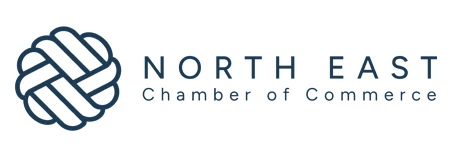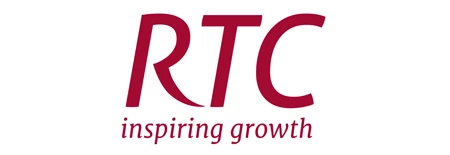Partner Article
How are businesses with field-based employees driving safety
Written by Mark Forrest, general manager of Trimble’s Field Service Management Division.
Field-based employees present a very different challenge to health and safety than their office-based colleagues. For obvious reasons the issues are completely distinct – the risks are greater to themselves and others, the chance of incident is increased and the visibility reduced.
Those working out in field-based roles, by the very nature of their work, are out on the road, driving different types of vehicles on various road types and at all times of the day. It is well-documented that vehicles driven for work make up the highest mileage on our roads and with one in three crashes involving someone driving a vehicle for work, management of driver safety is vital for the individuals, other road users and also for the company’s reputation as well as the legal and financial risks involved.
Top Priority
It was therefore, not a surprise that the Trimble ‘Road Ahead – the Future of Field Service Delivery’ report found that health and safety is a top priority for organisations with a field-based workforce.
In fact, the report revealed that 80% of operations managers and directors believe that health and safety is a higher priority than five years ago. Reasons cited for this include increases in legislation (68%), to ensuring insurance claims are kept to a minimum (61%) and an attempt to reduce the number of incidents (48%).
All of the companies surveyed have policies in place to protect staff, varying from simple initiatives, such as routinely checking drivers’ licences (93%) and providing regular briefings on how to drive more safely (73%), to employing a third party to educate the workforce on safety at work (63%) and having a written policy on safe driving (70%).
Brand V’s driving skills
The correlation between brand reputation and field-based workforce is now widely accepted across all industries. How employees drive or act on the road reflects on the company, and poor driver performance can negatively impact a brand. The Road Ahead report found 90% of respondents perceive customer-facing employees to be the core face of the company and further 79% of field service managers and directors believe that driving skill is taken seriously by the company and is strongly linked to the representation of the brand in the public eye.
To aid this, many organisations are using ‘How’s my driving?’ stickers, which display a contact number to call if a driver is perceived to be performing poorly on the road. While 88% of respondents agree that the number is never (or rarely) called, 94% believe they do produce an improvement in driver behaviour.
This suggests that the core impact of using ‘How’s my driving?’ stickers is intangible, providing a psychological incentive for the driver to be conscious of his or her driving behaviour.
The impact of technology
Technology does have a role to play too. If an improvement can be raised simply by the addition of a sticker with a call to action, then the correlation between the presence of a telematics system, which can monitor driver behaviour in real time, will be even more positive. In its ‘Measuring the risk’ 2012 report, The Fleet Safety Forum (a division of road safety charity Brake) stated that as telematics and related systems help identify and analyse risks, they can be used to allow businesses to mitigate driver safety risk through actions such as training, improved scheduling of journeys and allocation of staff and introducing new or updated policies and procedures.
The Road Ahead report revealed while 58% of organisations say they use a system to monitor drivers in order to identify and deal with poor driving before a driver’s assessment is due, but just one in three (33%) were using telematics for this purpose, with only a small minority turning to the technology to lower insurance costs out on the road.
Richard Coteau, corporate liaison officer at Brake said: “Safety behind the wheel has always been a priority for organisations with large number of vehicles and staff on the road, so it was encouraging that the Trimble Road Ahead report found that businesses are continuing to take health and safety seriously. However, it is surprising to discover that only one third of companies use telematics to identify and deal with poor driving.”
The Road Ahead report highlighted the fact that organisations could be doing so much more to leverage technology in order to improve - and derive greater benefits from - their health and safety procedures; 51% of the survey-base agree that the technology they are using to manage the safety of their employees is in need of updating, with 44% stating that their risk assessment software is in need of the most improvement.
Drive for improvement
The importance of the field-service team is set to grow, in terms of both numbers and strategic importance. The Road Ahead report found that two thirds of managers and directors plan to increase head count by 2017, and a further 90% agreed that their board is fully committed to improving field operations. As a result, the health and safety of these employees will continue to be a challenge.
Moving forward, telematics will play an integral role in monitoring driver behaviour, not only ensuring the safety and well-being on the road and helping organisations to positively reflect their brand image on the road, but also to reduce insurance premiums, which have been steadily rising in the last decade. This will further encourage a culture of safe driving and help companies save money and drive down costs – a win-win situation for any organisation with a field-based workforce.
This was posted in Bdaily's Members' News section by John Cameron .








 The real cost of tendering for construction SMEs
The real cost of tendering for construction SMEs
 A welcome step forward – but let’s keep pushing
A welcome step forward – but let’s keep pushing
 Industrial strategy 'can drive business forward'
Industrial strategy 'can drive business forward'
 Industrial strategy 'can be game-changer we need'
Industrial strategy 'can be game-changer we need'
 Driving skills forward with near £100,000 boost
Driving skills forward with near £100,000 boost
 What pension rule changes could mean for you
What pension rule changes could mean for you
 North East can't be an afterthought in AI future
North East can't be an afterthought in AI future
 Understanding the impact of the Procurement Act
Understanding the impact of the Procurement Act
 Is the UK losing ground in life sciences investment?
Is the UK losing ground in life sciences investment?
 Construction workforce growth can't be a quick fix
Construction workforce growth can't be a quick fix
 Why it is time to give care work a makeover
Why it is time to give care work a makeover
 B Corp is a commitment, not a one-time win
B Corp is a commitment, not a one-time win